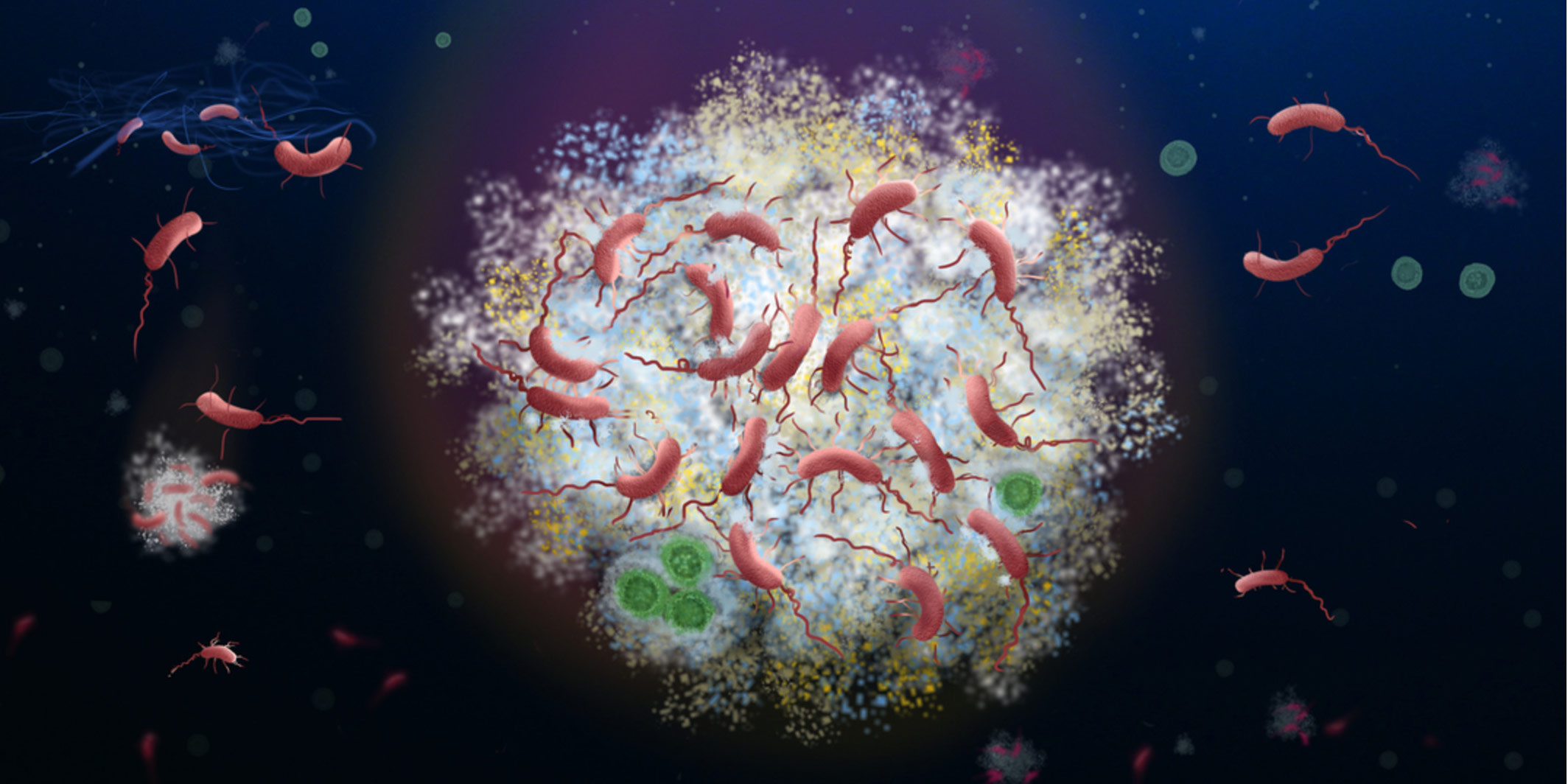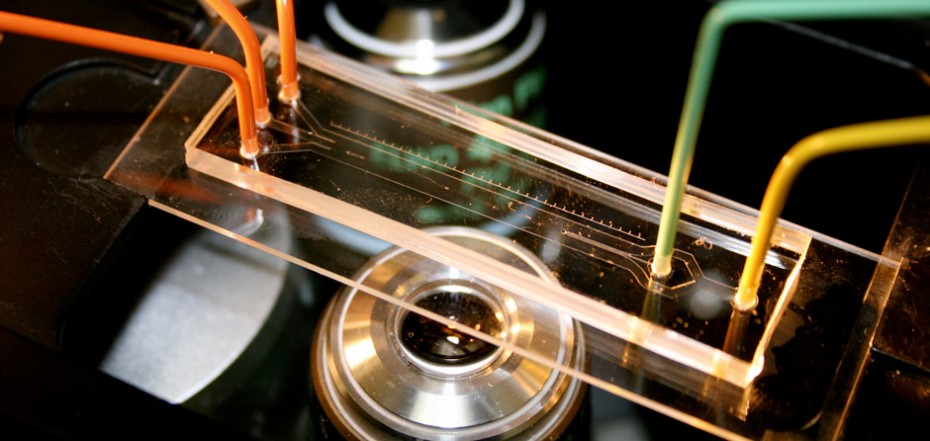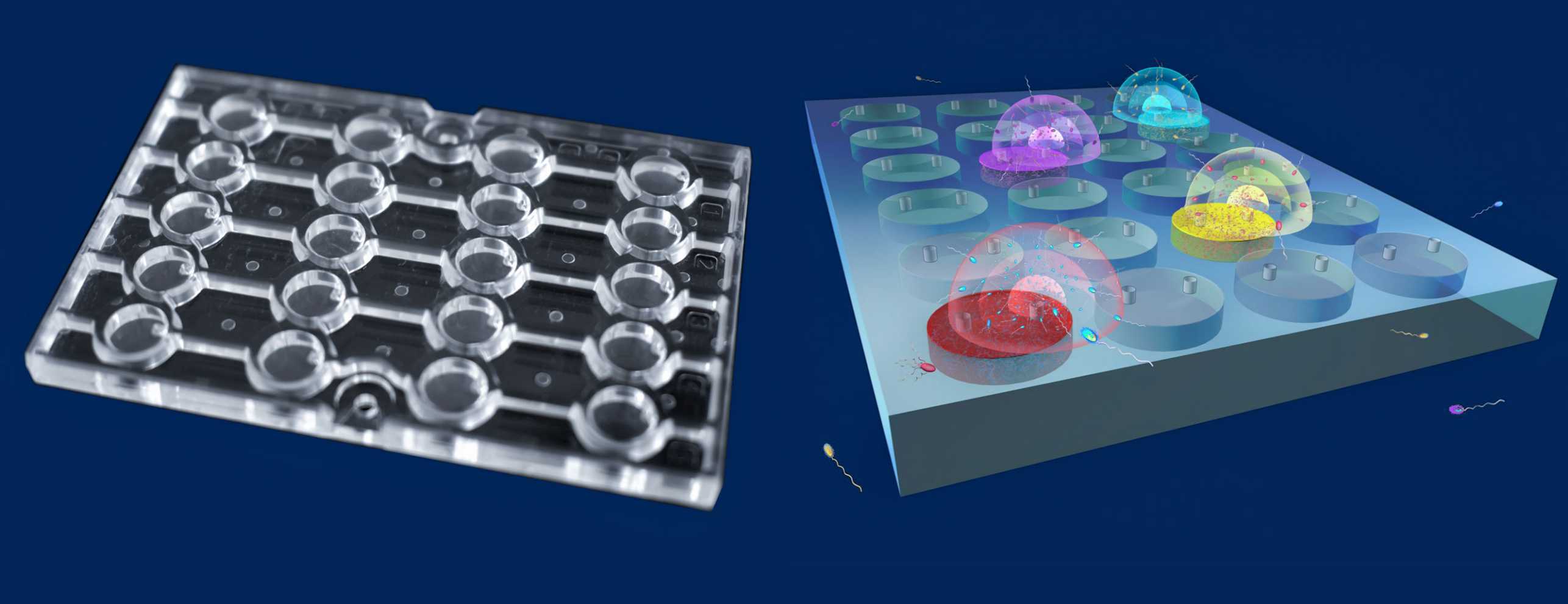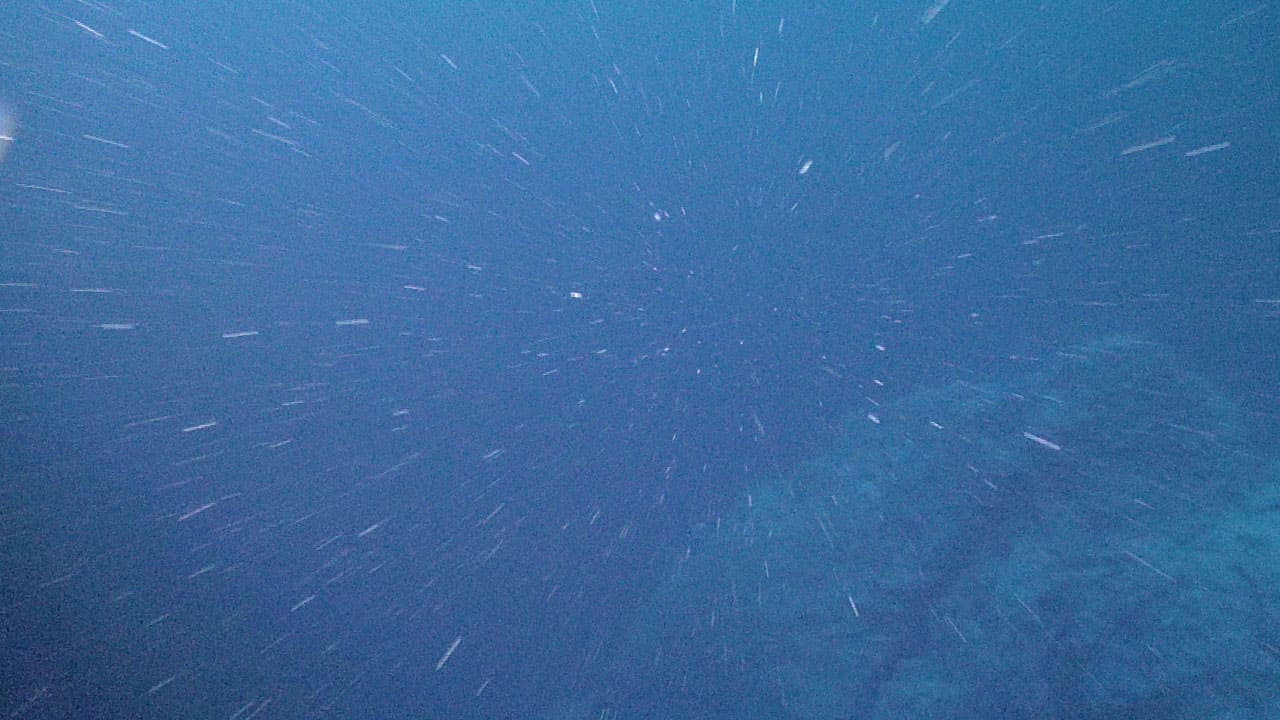A research collaboration led by ETH Zurich and MIT will receive a further USD 15 million from the New York-based Simons Foundation to investigate the behaviour of marine bacteria and microalgae. The research will focus on microbial communities that impact the ocean's carbon cycle.

Without microorganisms, higher life forms would not exist. Bacteria and single-celled algae form dynamic communities that drive fundamental ecological processes: they build biomass, break down dead organic matter and recycle the elements of life. "Despite their huge importance, little is known about the nature of microbial communities," says ETH Professor Roman Stocker from the Institute of Environmental Engineering.
Since May 2017, Stocker and his team have collaborated with nine research groups from various universities to research the underlying functional principles of microbial ecosystems in the ocean. The Principles of Microbial Ecosystems (PriME) project is led jointly by ETH Zurich and the Massachusetts Institute of Technology (MIT) and is financially supported by the US-based Simons Foundation (see press release: Focus on microbial communities). Stocker is a Co-Director of PriME and co-founded the project six years ago.
PriME recently entered its second phase, with the Simons Foundation once again supporting the consortium by providing USD 15 million to analyse the interactions of marine bacteria and single-cell algae on the microscale over the next five years. And once again, three research groups from ETH Zurich will be on board: professors Martin Ackermann, Uwe Sauer and Roman Stocker will receive a total of USD 4.2 million from the New York foundation. The overall goal remains the same - to understand how marine microbes form communities and how these communities function.
Engineering knowledge for new research tools
The dynamics of microbial communities are determined by the behaviour of their members, who are often anything but passive. "Many microbes can swim. They actively perceive and interact with their environment, and their movements are deliberate," Stocker explains.
However, making the interactions of these cells visible is challenging. A single drop of seawater is teeming with over a million microbes. "The scale of bacterial interactions is so small that we simply can't investigate them with the usual oceanographic methods," explains the environmental engineer. In his laboratory at the Department of Civil, Environmental and Geomatic Engineering, he develops methods for microecology that close this methodological gap.
Stocker is a pioneer in the field of environmental microfluidics. His team uses microfluidic techniques that are otherwise used by chemical engineers to handle tiny amounts of liquids, and combines them with modern microscopy and imaging to study microecosystems.
Behavioural tests for individual microbes
Environmental microfluidics enables, for example, high-resolution visualisation of the behaviour of individual microbes and the quantification of metabolic processes at the same time. This opens up new horizons. "We can not only track how individual cells move and make decisions, but also examine why they do it," explains the environmental engineer.

One example is the chemical preference test for microbes that the ETH researchers developed specifically for use in the open ocean. The "in situ chemotaxis assay" (ISCA) consists of a credit card-sized plastic plate with small chambers inside, which are connected to the outside world via fine channels - a kind of micro-sized lobster trap. Bacteria that like the "smell" of an attractant in the trap will follow the trail and swim in.

The ability of bacteria to swim towards or away from more concentrated substances is called chemotaxis. Until recently, this behaviour had only been observed in laboratory tests.
Marine microbes find food chemotactically
With the ISCA microfluidic chip, Stocker's team and their Australian colleagues were able to investigate for the first time how marine bacteria search for food in the ocean. In an acclaimed study in external pageNature last April, the researchers were able to show that a wide variety of bacterial species in the coastal waters off Sydney actually use chemotaxis to track down phytoplankton - microalgae that absorb CO2 from the water and produce organic matter through photosynthesis. Some of the synthesised matter is released by the algae into the seawater and forms the favourite food of bacteria. In an otherwise nutrient-poor environment, they sniff out their food and purposefully navigate towards these microscale hotspots of released food molecules.
It had been suspected for decades that wild bacteria find their food via chemotaxis, but this had never been confirmed in the open ocean. These findings have ecological relevance; when mobile bacteria purposefully search for food, their success rate increases significantly. This also allows rare microbes to gather in large numbers around a food source.
There are always numerous bacterial species teeming around individual living phytoplankton cells as the bacteria feed on the synthesis products. This is one of the most important interactions of microorganisms in the sea - the collective metabolism of this microbial community utilises organic matter and recycles CO2, which drives the ocean carbon cycle.
Decomposition of marine snow slows the carbon pump
Phytoplankton are also the protagonists of another important interaction, which finds them falling in the form of marine snow. The phenomenon stems from the billions upon billions of single-cell algae that grow in the light-flooded upper layers of the ocean, which then die and sink to the ocean floor as organic particles. This "biological carbon pump" continuously transports bound carbon to the depths. However, an inverse process slows the flow of carbon. As snow particles sink, they are colonised by countless bacteria, which decompose most of the particles' organic material.

"Even if only a fraction of the carbon reaches the ocean floor and is stored, the biological carbon pump still results in the oceans absorbing large amounts of CO2 from the atmosphere," explains Stocker. His team took a closer look at the microbial scramble on this deep-sea freight and found that the bacteria decompose sinking particles up to ten times faster than previously assumed based on laboratory tests in water without a current. A high-resolution look at the microscale dynamics around these particles revealed the reason: the flow caused by sinking constantly washes away byproducts of decomposition, which otherwise make the work of the bacterial enzymes more difficult.

'To better assess the consequences of climate change on key ecological processes, for example, it is crucial to understand how the many species in microbial communities interact with one another.'
Roman Stocker
This reduces the amount of carbon that reaches the ocean floor. Based on model calculations of carbon flow, the researchers estimate that the increased particle decomposition reduces the theoretical transport efficiency of the carbon pump by half, which correlates with macroscopic measurements of real carbon transport in the ocean.
Focus on key ecological processes
Over the past five years, the PriME consortium has produced over 60 publications - most of them illuminate how microbes find and utilise food. In the follow-up project, the partners now want to focus more closely on the two ecologically significant micro-ecosystems around phytoplankton and marine snow particles. Specifically, their aim is to conduct more in-depth research on the interactions between bacteria and single-cell algae, and between bacteria and marine snow.
Stocker will be working closely with Martin Ackermann and Uwe Sauer at ETH Zurich. Ackermann is the Director of Eawag and heads the Microbial Ecology group at ETH Zurich, Eawag and EPFL. He is an expert on bacterial individuality and provides the team with an in-depth understanding of how interactions between individual bacterial cells affect the community. Sauer is a systems biologist and a specialist in bacterial metabolic processes. He contributes state-of-the-art methods for high-resolution measurement of the substances exchanged by microbes in communities. Together, the researchers want to bridge the gap between the behaviour of individual cells and the ecological role of the oceans. This includes the effects of microbial communities on carbon flow in the ocean.
"To better assess the consequences of climate change on key ecological processes, for example, it is crucial to understand how the many species in microbial communities interact with one another," explains Stocker. Studying the tiniest forms of life can help us better understand our world as a whole.






